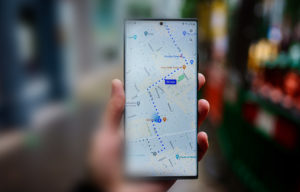In the era of fast paced technological advancement, keeping up with the modernization and upgrading of technological devices is a need so profound no business can ignore it.
Think about how many different smartphones you’ve gone through over the last few years. Imagine how the smartphone has helped improve your life with all the information in the world at your fingertips.
And it’s just the beginning.
With the iPhone currently on version 6s and they are coming out with version 7 soon.With the adaptation of smartphones and tablets, internet usage over all has witnessed a major shift in its patterns and behavior. And Google has taken note with their major algorithm update for mobile searches. If your website was not complaint there could be a chance that Google would punish you.
You need not necessarily log onto a site on your PC to access it – it’s right there in your palm. This has revolutionized web design strategies and practices as well, which are now directed towards these gadgets to cater to the majority of smartphone users, which are plenty!
A responsive web design is the layout of a website that provides optimal viewing experience to the users on any gadget they may be using. Whether you are on your desktop, iPad or tablet, or smartphone, your website will scale into proportion for the device you are viewing from.
This is more common a phenomenon in today’s time with the advent of smartphone and tablet culture all over the world. Companies are trying to get down to business with their responsive web design so as to ensure that the lay out, text, and graphics of a website automatically adjusts to the different size of screens out there.
What can you do to make your responsive web design better?
1. Define Purpose
Defining purpose for your responsive web design makes it easier to focus on the targeted elements that need to be restructured in a website. Each section of the website should represent the ultimate purpose (collection of customer feedback, providing information, entertainment, online transactions etc). Effective responsive web design involves definition of purpose of the entire website, first thing but also how the end user will interact with the site in terms of conversion.
2. The Content Comes Along With Design
When designing a responsive web design, many companies wait to let the professionals work their way and get done with it before they start adding content to their site. However, it would be a splendid idea to create content along with your design so to give it a more meaningful look (the design) and make it sound in cohesion with the entire content of your design. It also cuts down the time it takes to deliver a website to a client or partner.
3. The Effective Image
When discussing responsive web design, images are what come to the mind instantly. Choosing the right images is one thing but developing images based on a size that fits all the devices gets a bit tricky- but is necessary anyhow. Adding pictures, infographics, and videos could enhance the quality of your website but it also has to be kept in consideration to select the images and other graphic elements with the size that is mobile friendly and easily adjusted to different screen sizes.
4. Compression of Elements To Enhance Loading
Along with images, various elements of the website are compressed in responsive website designing. So to ensure the site works well with low as well as high bandwidth — and that reduced file sizes may fit any gadget’s display and speed — programs are used to compress the files. Programs such as GZIP allow web designers to compress the site elements to make it accessible to any type of mobile devices.
For more information on how SM Digital Partners can help your business transcend into the 21st century please call us at 954-606-5980.







